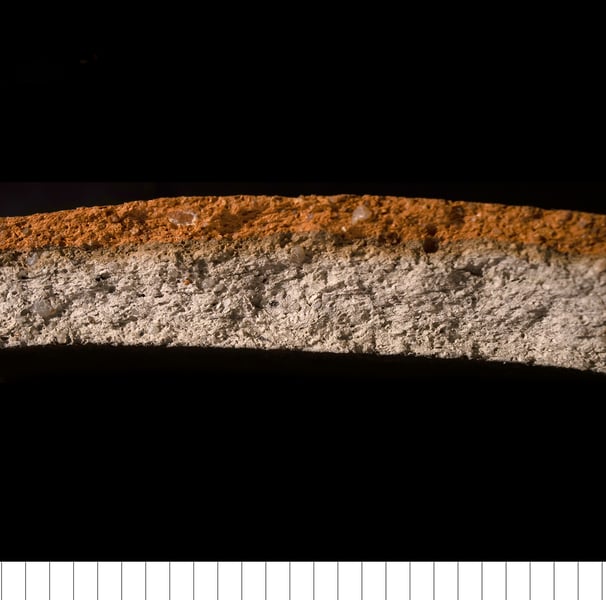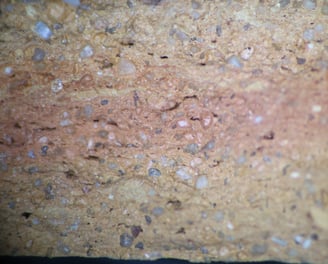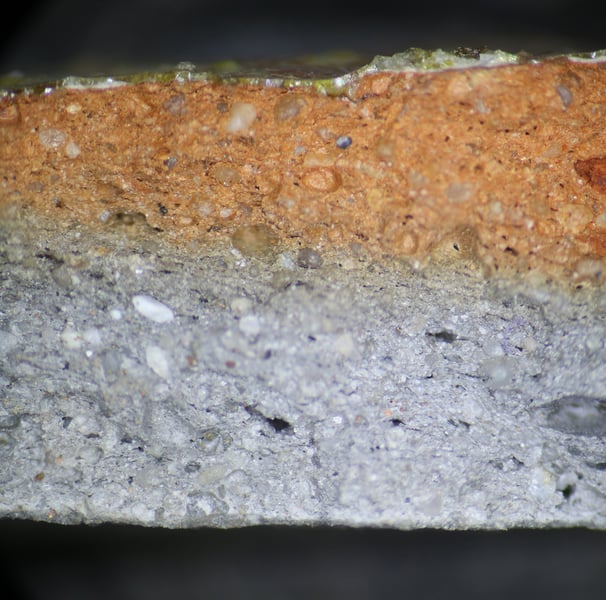HOLG - Hollesley Glazed Ware
Fine to medium sandy with occasional ferrous, flint and organic inclusions, finer surface appearance than the coarsewares. Usually oxidised to a dark red externally with internal half of section reduced pale to dark grey (the latter is more typical, despite the photo). Patchily glazed with lead glazes in green and orange, sometimes with slip decoration. (L.)13th–14th c.
TS sample description (Patrick Quinn): Moderately well-sorted fine sand and silt sized sub-rounded to angular inclusions of quartz with less frequent polycrystalline quartz, chert and rare glauconite. The more angular silt-sized inclusions contain frequent muscovite mica and ferruginous material. Non-vitrified non-calcareous clay matrix that is oxidised on one half and reduced on the other. Frequent meso-elongate drying voids and one elongate macro-void with charred plant matter.
Example from Hollesley kiln site.




HOLG - Hollesley Glazed Ware
Microscope sample, fully oxidised.
Example from Hollesley kiln site.


HOLG - Hollesley Glazed Ware
Microscope sample, oxidised externally.
Example from Hollesley kiln site.
Copyright
This website, and the type series, was created by Dr Sue Anderson, Spoilheap Archaeology: www.spoilheap.co.uk
I am available for contract work on pottery from East Anglia and beyond. Email sue@spoilheap.co.uk
© 2024. All rights reserved.
To visit the type series at Suffolk County Council Archaeological Service, Bury St Edmunds, contact Faye Minter: Faye.Minter@suffolk.gov.uk
Tel: 01284 741 228 to make an appointment.